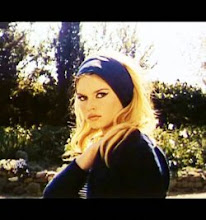
date watched: May 30, 2009
location: Apgujung Cinecity, Seoul, Korea
So this was the second time watching this movie. On Trial One, I had missed the beginning--the rather important beginning, may I add--and felt compelled to watch it another time.
I must also add that Neil Gaiman's book is rather eerie (Yes, more than the movie, even!), and I wish I had read it BEFORE I watched the movie the first time around. A couple of crying children left the theater, I kid you not. They probably thought it was a rather cheery kind of adventure film. Oh, those poor children. One kid kept saying "I'm scared" to his mother, but remained, probably out of curiosity. He will no doubt have nightmares tonight, poor chap.
Gaiman said that the eccentric name was a result of a typo: he intended to call the character "Caroline" but had typed "Coraline," but kept the latter because he felt even accidents were a necessary part of the writing process. The dedication to the book is rather endearing, since he had originally started to write this for his first daughter, but had finished it by the time his second daughter was born.

In any case, I must say that although I had great fun watching this Western version of Spirited Away (Hayao Miyazaki, 2001), Selick's earlier success, The Nightmare Before Christmas (1993) is far more sensational. My mother, who watched it with me this time around, thought that computer graphics may make the appearance of this film look rather realistic, but it also deadens the "spirit" of the film. Although I wouldn't be able to explain her comment, I knew what she was talking about.
I recommend the soundtrack to anyone, whether or not he/she has watched the film. Bruno Coulais really knows how to carry the spooky effects, without overpowering the scenes. I was surprised that the album even included the short, albeit super charming "other father" song as well.
Oh, and whoever thought of Teri Hatcher as the voice of the mother/other mother is genius. Her scratchy yet high-pitched tone is perfect for both a workaholic mother and a metal-clawed, button-eyed witch.
On that note, I thought it was clever to use buttons as the central image. We are used to thinking about buttons as decoration, or we could even think of the phrase, "cute as a button." In the world of Coraline, however, buttons are neither embellishments nor cute. They are the first stepping stones to an abysmal world of domination, and of a love that kills, literally.
I could even sense hints of The Matrix (Wachowski brothers, 1999) when Coraline and the cat walk away from the Pink Palace, only to return to it again. The "other world" behind the door is almost like Neo's virtual world. It is also strikingly similar to one of my favorite stories of all time, Lewis Carroll's Alice in Wonderland.

















































